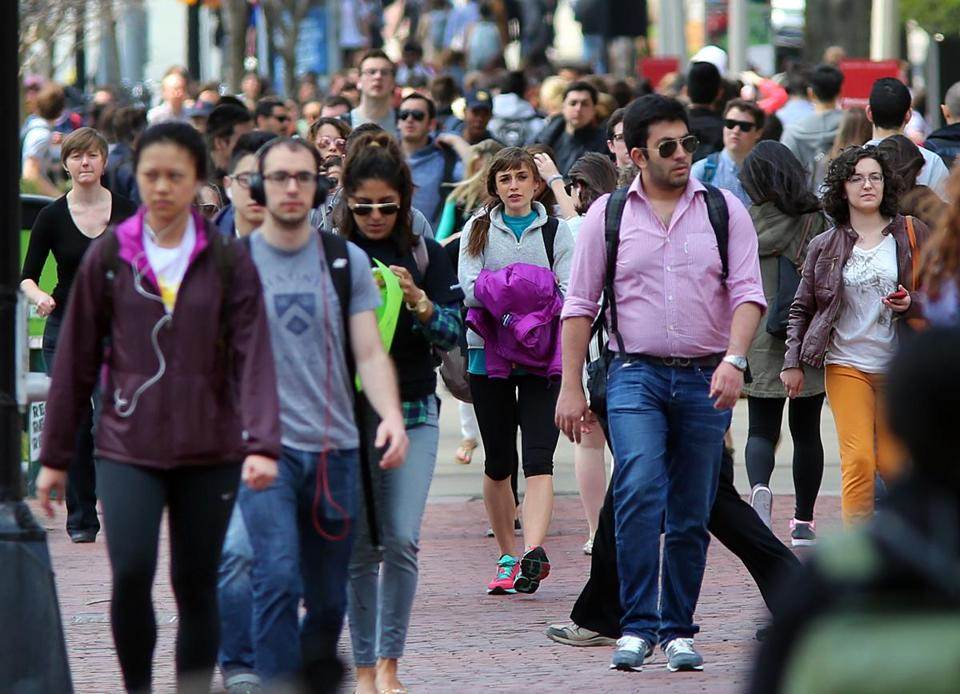EEOC v. Abercrombie & Fitch Stores, INC.
A young Muslim woman goes to interview at Abercrombie & Fitch. After the interview, the employee who was interviewing her scored her interview highly, and she was on her way to becoming an employee of the store; however, upper management felt that the young woman’s headscarf “posed a problem” and decided not to hire her due to her headscarf.
What comes to mind when you think of East Coast college style? Something like this?
Or maybe this?
 I am pretty sure that we can conclude that East Coast colleges are rather diverse today in terms of what students are wearing. When I think of East Coast college style, there is no “one look” that comes to mind. Not so, according to Abercrombie & Fitch, as there apparently is a “look.”
I am pretty sure that we can conclude that East Coast colleges are rather diverse today in terms of what students are wearing. When I think of East Coast college style, there is no “one look” that comes to mind. Not so, according to Abercrombie & Fitch, as there apparently is a “look.”
Back in 2008, Samantha Elauf applied to work at an Abercrombie & Fitch store. When management realized that Samantha wore a headscarf, they refused to hire her, as her headscarf did not “fit” with their image. Basically, they felt that a headscarf did not fit into the”East Coast collegiate style” that they were selling. And to add to this, the district manager felt that Samantha’s headscarf “posed a problem.”

Interesting, because as a student who had spent her undergraduate and now graduate years on East Coast college campuses, I can say that a young woman wearing a headscarf on an East Coast college campus is not out of the ordinary.
Samantha decided not to allow Abercrombie & Fitch to get away with this type of discrimination, and her case made its way to the Supreme Court of the United States (SCOTUS).

SCOTUS’ 2015 8-1 decision made a strong statement: Samantha should not have had to make a request for a religious accommodation—nor should she have had to tell the company upfront that she wears a headscarf, as the company had implied that this should have been done. SCOTUS also pointed out that the company violated the Civil Rights Act of 1964. And let me point out that this company is supposed to be an equal opportunity employer. So we cannot even argue that they can just discriminate against whomever they want to.
This case speaks to many of the clients we as social workers work with on a day-to-day basis. Social workers are an amazing group of people who stand up for vulnerable populations and the voiceless. With our passion for justice and our life’s work of advocating, this is a case that has an impact on our work and our clients. This case has sent a message that discrimination against persons who may not fit the mold of a company’s image, especially when the discrimination is related to a person’s religious attire, will not be tolerated. As social workers, we need to be there for our clients who are discriminated against, and we need to guide them in taking action if the client chooses to do so.
As social workers, we are also full of resources. Remember, if a client reports that they have been the victim of discrimination by an EEOC and they would like to take action (self-determination), you can help your client to make a report here.
Great read. I hate when things like this happen, the “whole us vs them” position. Elauf wore a headscarf and automatically became a “them” unworthy of equal treatment. It’s so frustrating that aspects of other cultures (not just dress) is rejected and stigmatized because it’s not “normal” here. Normal is subjective. I’m glad that SCOTUS ruled in favor of Samantha.
LikeLiked by 1 person
I haven’t heard about this yet, but it really irritates me. It’s not even that her headscarf is her style, it’s what her culture/religion has to wear. This is a great example of unequal treatment in the US, especially in regards to norms in our young society.
LikeLiked by 1 person
Pamela, I think your blog was great. It is especially helpful providing a resource at the end of your blog for employment discrimination. All too often clients seem to run into this type of discrimination. I could imagine social workers sometimes may run into this issue too.
LikeLiked by 1 person